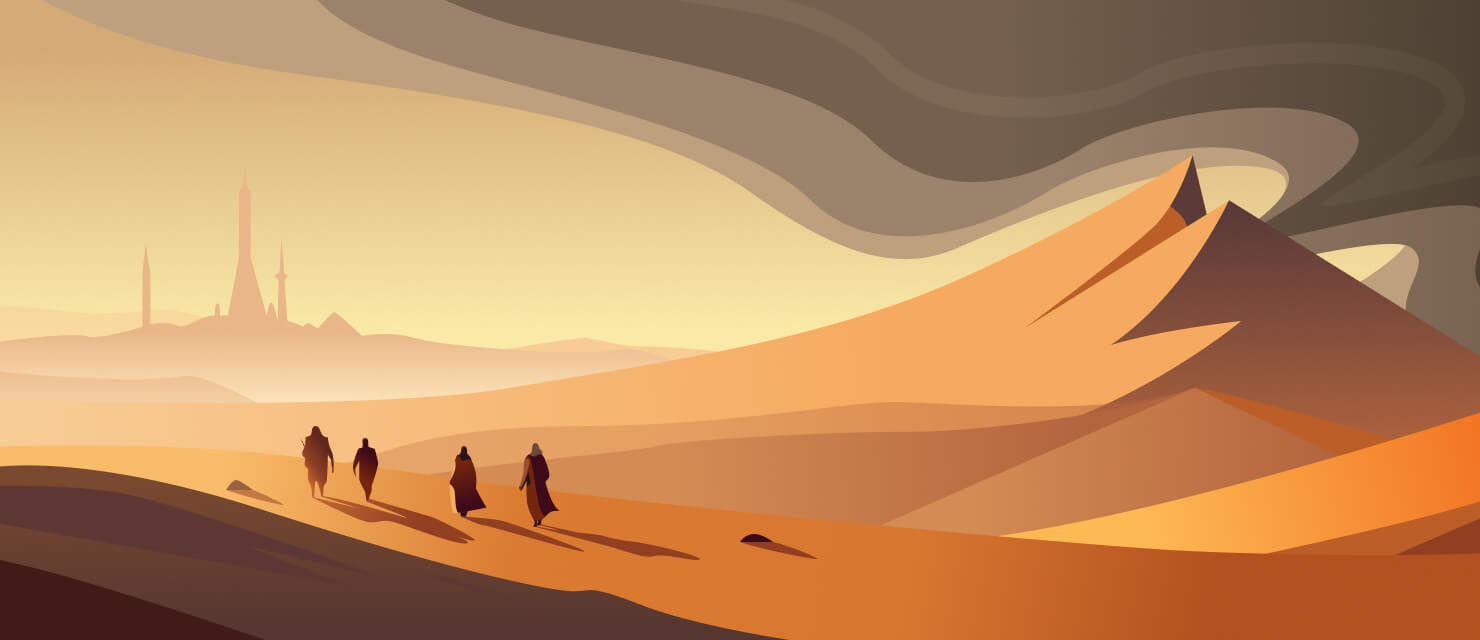The weather has always played a crucial role in the course of human history. From agricultural practices to migration patterns, weather events have had far-reaching impacts on civilizations throughout time. In this article, we will take a look at 8 significant weather occurrences. These famous weather events left an indelible mark on human history, altering societies and economies. Before we proceed, here’s a quick summary of these historical weather phenomena and their impact:
| Event | Impact |
|---|---|
| Dust Bowl | Mass migration |
| Little Ice Age | Famine, higher food prices, European colonization of the Americas, the French Revolution |
| Great Storm of 1703 | A turning point in understanding and predicting weather patterns |
| Year Without a Summer | Higher food and travel prices, the invention of a bicycle |
| Galveston Hurricane | Construction of a seawall, implementation of hurricane preparedness measures |
| Great White Hurricane | Advancements in snow removal methods, improvements in weather monitoring systems |
| Hurricane Katrina | Changes in emergency management and infrastructure planning |
| The Medieval Warm Period | Expansion of Norse settlements across the North Atlantic |
Dust Bowl
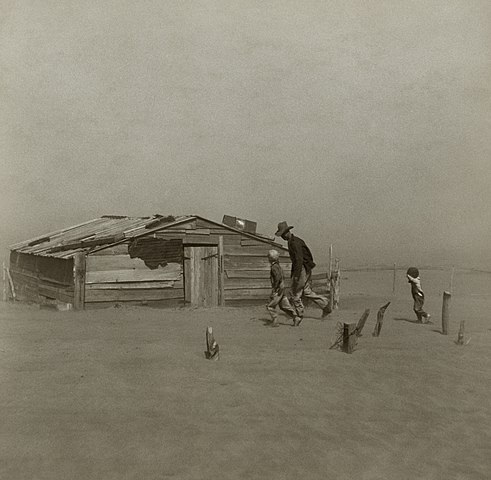 Image source: Wikipedia
Image source: Wikipedia
The Dust Bowl belongs to the extreme weather events of the past that show the devastating consequences of both natural and human factors. In the 1930s, poor land management practices and unsustainable farming methods led to prolonged drought and massive dust storms in the Great Plains of the United States. This ecological disaster demonstrated the impact of weather on human history. It forced thousands of families to abandon their homes, triggering a mass migration to find better opportunities elsewhere.
Little Ice Age
The Little Ice Age refers to a period of significant cooling that affected Europe and other parts of the world between the 14th and 19th centuries. Longer and harsher winters, cooler summers, and failed harvests resulted in widespread crop failures, famine, and increased vulnerability to diseases. This climatic shift influenced social, economic, and political dynamics.
While the exact causes of the Little Ice Age are not fully understood, several factors likely contributed to its onset and duration:
- Solar activity. Scientists believe that reduced solar activity, specifically a decrease in sunspot activity known as the Maunder Minimum, caused cooler temperatures during the Little Ice Age.
- Volcanic activity. The Little Ice Age coincided with a period of increased volcanic activity. Major volcanic eruptions release large amounts of ash and aerosols into the atmosphere, which can block sunlight and lead to cooling.
- Ocean circulation. Changes in ocean circulation patterns, such as the Atlantic Meridional Overturning Circulation (AMOC), may have contributed to the Little Ice Age. Disruptions in the AMOC can alter the distribution of heat and affect climate patterns.
The Little Ice Age had significant impacts on human history, primarily in Europe and North America, such as:
- Economic disruptions. The colder climate had adverse effects on various economic activities. Reduced agricultural productivity led to higher food prices and economic instability. In addition, rivers and ports in Europe froze more frequently, impacting trade and commerce.
- Social and political unrest. The hardships caused by the Little Ice Age intensified social and political tensions. Food scarcity and rising prices fueled social unrest and uprisings, such as the French Revolution in the late 18th century.
- Exploration and migration. The difficult living conditions prompted exploration and migration to seek more favorable environments. European colonization of the Americas was partially motivated by the desire to find new lands with better agricultural prospects.
Great Storm of 1703
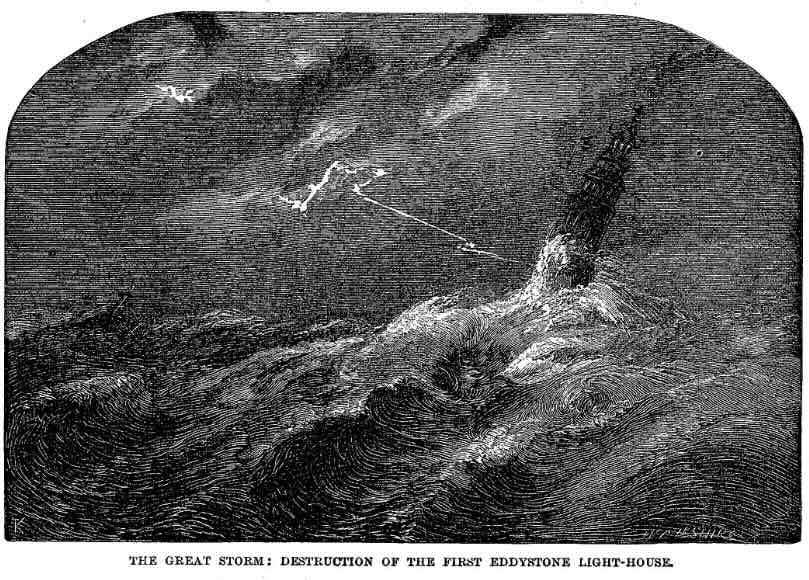 Image source: Wikipedia
Image source: Wikipedia
The Great Storm of 1703 was one of the most severe and famous storms in history. It hit the southern coasts of England and caused extensive damage to buildings, ships, and infrastructure, resulting in the loss of thousands of lives. This catastrophic event led to advancements in meteorology and the establishment of storm warning systems.
The Great Storm of 1703 became one of the most influential weather events in human history. It marked a significant turning point in understanding and predicting weather patterns.
Year Without a Summer
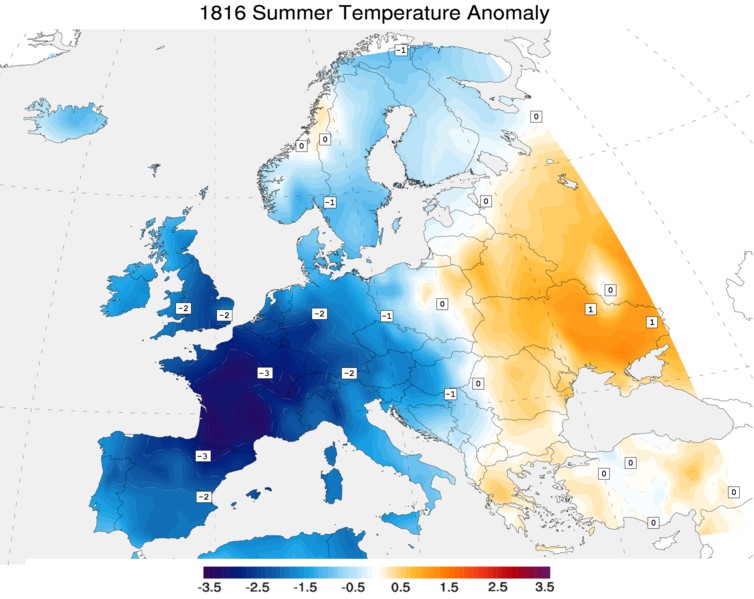 Image source: Giorgiogp2, CC BY-SA 3.0, via Wikimedia Commons
Image source: Giorgiogp2, CC BY-SA 3.0, via Wikimedia Commons
In 1816, the world experienced an exceptionally cold and gloomy summer, which was one of the major weather events in the past. This period is often referred to as the “Year Without a Summer” or “Eighteen Hundred and Froze to Death.” The cause was a volcanic winter triggered by the eruption of Mount Tambora in Indonesia.
The eruption spewed massive amounts of ash and aerosols into the atmosphere, blocking sunlight and causing temperatures to plummet. Crops failed, leading to widespread food shortages and social unrest in various parts of the world.
Oats, which people used to feed their horses, also got more expensive. Horses were the main way to travel, so higher oat prices meant higher travel costs. This might have motivated a German man named Karl Drais to create a new way to move around without a horse: the bicycle.
Galveston Hurricane
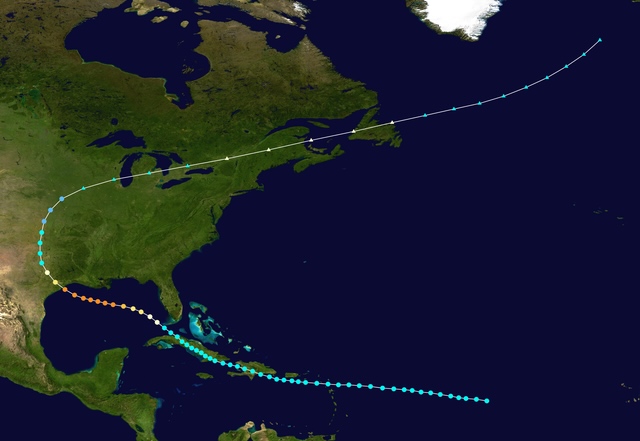 Image source: Wikipedia
Image source: Wikipedia
The Galveston Hurricane remains one of the deadliest weather events in history of the United States. In 1900, the Category 4 hurricane struck the city of Galveston, Texas, with devastating force, claiming an estimated 8,000 lives and causing widespread destruction.
This tragedy belongs to weather events that changed history. It prompted the construction of a seawall and the implementation of hurricane preparedness measures that continue to shape coastal planning and response strategies today.
Great Blizzard of 1888
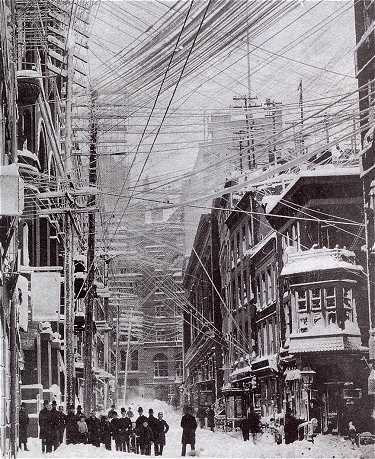 Image source: Wikipedia
Image source: Wikipedia
The Great Blizzard of 1888, also known as the Great White Hurricane, brought extreme snowfall and strong winds to the northeastern United States. The blizzard paralyzed major cities, disrupted transportation, and caused significant economic losses. The event led to advancements in snow removal techniques and the establishment of more robust weather monitoring systems.
Hurricane Katrina
Hurricane Katrina, one of the strongest hurricanes on record and the greatest weather disasters in the past, struck the Gulf Coast of the United States in 2005. The storm surge breached levees, causing catastrophic flooding in New Orleans and other areas. The disaster exposed shortcomings in disaster preparedness and sparked significant changes in emergency management and infrastructure planning.
Medieval Warm Period
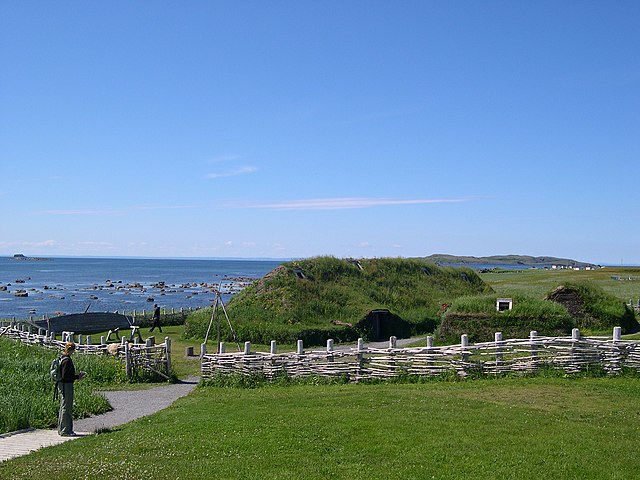 Image source: Dylan Kereluk from White Rock, Canada, CC BY 2.0, via Wikimedia Commons
Image source: Dylan Kereluk from White Rock, Canada, CC BY 2.0, via Wikimedia Commons
The Medieval Warm Period (10th to 14th century) was a climatic anomaly characterized by relatively warmer temperatures in Europe. This favorable climate facilitated Viking exploration, colonization, and trade. As a result, Norse settlements expanded across the North Atlantic, including Greenland and parts of North America.
Conclusion
Historical weather events have left an indelible mark on humankind, shaping economies, migration patterns, cultural beliefs, and even political landscapes. These notable weather incidents have demonstrated the influence of natural powers on human civilization. By understanding the lessons learned from these weather phenomena in the past, we can better prepare for future challenges posed by extreme weather conditions and climate change.
